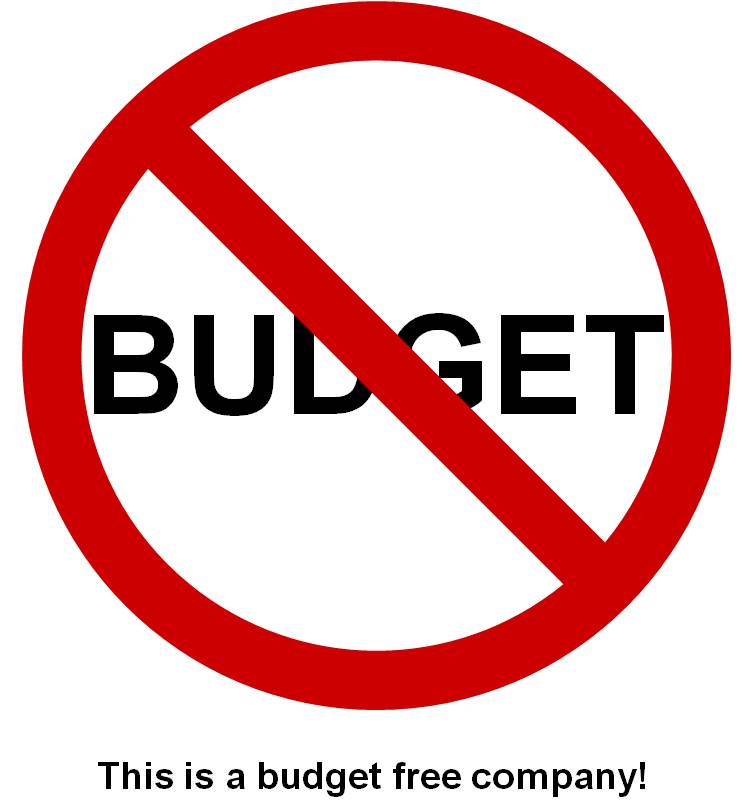| |
Budgeting
24 February 2012 • Ype Wijnia
planning
Almost every large organization has an annual planning and control cycle in which the budget for the departments is determined. The importance of proper planning is that the resources needed by the departments are known and coordinated in advance. Finance then can prognosticate the cash flow, and make certain the cash is available when it is needed. A similar reasoning holds for the human resource department, which can use the operational plan to time their recruitment efforts. The cycle normally starts about now, with a plan brief, containing the targets of the strategic plan and the orders for the departments. In that brief, normally a deadline is set for the first cut operational plan for the departments, mostly before the summer holidays. Those first drafts are then commented and sent back to the departments with the instruction to review the plan according to the comments and deliver a final version before the first of October. The total organization wide operational plan is the combination of all departmental plans. If the strategic targets are not met, or the financial limits are exceeded a round of corrections may follow. The final version is distributed back to the departments around December, so that they know what their budget for the next year will be.
Anyway, that is the theory. But practice can be very different. Quite too often (at least in established companies) the plan brief will contain the message that the company is facing major challenges and the company will be put on a cash diet, instead of the announcement of major market opportunities that should be captured with investments and increases in production. Every department takes this brief very seriously, but somehow the budget needed for the next year will be slightly above the budget that was allocated for this year, due to very special circumstances. As every department uses the same tactics, the first draft of the total plan exceeds the budget limit and someone will start shouting that every budget should be cut by at least 10%, without exceptions. After some pro forma protest the departments will do their homework and present a second draft, which is significantly better than the first draft but not yet good enough. By this time, finance usually decides it is time for action and they start slicing. Every budget line is reduced by a certain percentage, until the total budget target is reached. This altered plan then is sent back to the departments as the final version. And again, somehow this final plan is often very close to last year’s realization. All in all it seems a lot of movement to end at the starting point. One could easily obtain a serious form of allergia budgetidis.
If this is reality, why do we make all the fuzz? What is so bad in using last year’s result as a starting point for the plan? In practice this might happen anyway, as departments pass on the plan brief and last year’s budget to the junior of the department. But that only results in confusion, typing errors and misunderstandings. Isn’t it smarter to do that centrally? Then you only have to ask the managers for the known deviations instead of the full picture. Put in a budget for unforeseen events and the budget is ready.
Building on this idea, why does an organization need a budget in the first place? De fixed costs of an organization do not change year to year, as they are, so to say, fixed. Personnel cannot be sent home immediately (at least in our country), and depreciation in the capital intensive industries tends to run for a long time. With regard to the variable costs, one certainly hopes that they are not budgeted. A greengrocer will not stop selling bananas because his banana budget has run out if sales exceed expectations? Instead, if bananas are selling like crazy the greengrocer will order more.
Reasoning along this line the only conclusion to reach is that the idea of a budget in a producing environment is a strange thing. Budgets are needed if there is truly a limit in the resources and priorities have to be set in expenditure. Wise people have budgets for their holidays, presents and eating out, just to name a few. If not, you may run out of food one day and turn to the salvation army for dinner. But all those examples are consumption, not expenditures to make money (except the food of course).
We as asset managers have been a bit foolish that we did allow ourselves (by means of the budget) to be labeled consumption. Expenditures on assets are just investments in the production capability, that either result in better quality, more production or less external effects. Perhaps we should initiate a hallmark for proper asset management.

Ype Wijnia is partner at AssetResolutions BV, a company he co-founded with John de Croon. In turn, they give their vision on an aspect of asset management in a weekly column. The columns are published on the website of AssetResolutions, http://www.assetresolutions.nl/en/column
<< back to overview
|


